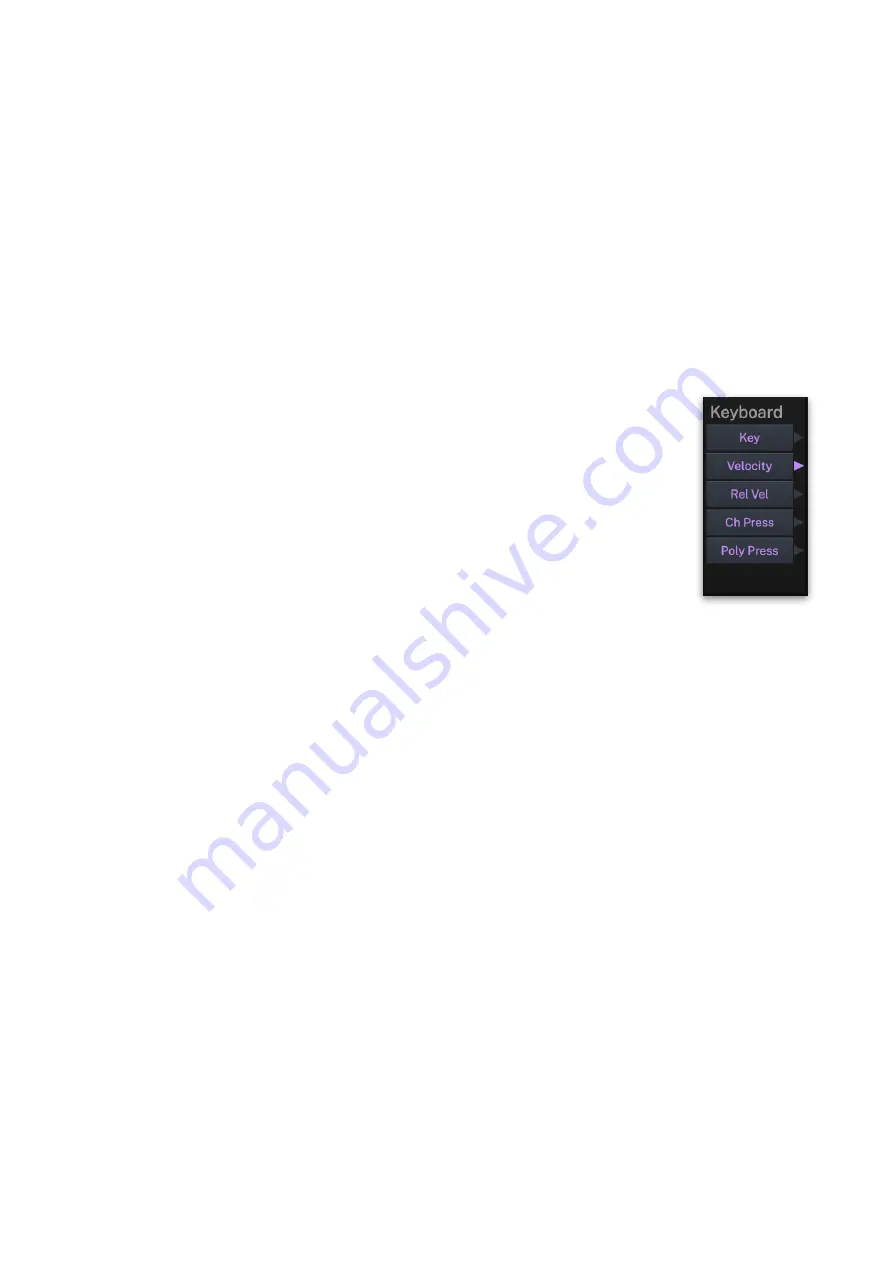
F-em User Guide
Stages value and move the mouse pointer up or down. Stage points
will be placed within a grid, that is defined with the Grid parameter.
4)You can also adjust the slope by clicking on the rounded rectangular
handles in the display and move it vertically. The slope of the stage
can be changed gradually between fully exponential when the handle
is moved fully down, to linear when the handle is in the center
between the previous and next stage up to an inverse exponential
shape when the handle is moved fully up.
5) To close the LFO Curve editor, click on the X in the upper left corner.
Other Mod Sources
Beside the Flow LFOs and Operator LFOs and Envelopes, F-em offers a
lot of other modulation sources. Click on the
Sources
button to call up
the corresponding sources.
•
Keyboard
sources:
• Each
Key
on a MIDI keyboard has a certain
note number. Low notes have low numbers
while high notes have high numbers. F-em
converts this note number into a bipolar
modulation source with MIDI note C3 (MIDI
note #60) as center, i.e. where no
modulation occurs. Lower notes result in a
negative modulation while higher notes
result in a positive one. Keytrack is applied
to Operator Pitch on melodic sounds by
default to allow sounds to be played
melodically (but you can certainly change this setting).
Use Keytrack on other parameters as well, for example
Filter Cutoff to make higher notes sound brighter or
envelope Decay or Release to shorten the sound slightly
on higher notes. Another interesting modulation
assignment is Redux Rate, especially with samples, to
create low-fi sounds reminding of early samplers of the
1980s. All parameters that control more or less some
kind of pitch, like Cutoff, Redux Rate and certainly
Operator Pitch can be played perfectly chromatically
when the modulation depth is at maximum.
•
Velocity
: On almost all MIDI keyboards, hitting keys soft
or hard results in MIDI notes with different velocities
between 1 and 127 (0 is never sent on note on messages
as it means „interpret this note as note off“ in the MIDI
world). This is the same behavior as on a piano where
harder played keys sound louder and brighter than softer
played keys. You can use Velocity to change any
parameter directly, but typically, as found on most
hardware synthesizers, you might use it to control the
depth of a LFO or one of the envelopes modulating a
certain parameter. For example, modulating Filter Cutoff
is usually not performed directly by Velocity, but an
envelope is applied to it controlled by Velocity, maybe
accompanied by some additional modulation without
Velocity. Just think again of a piano: the harder you strike
a key, the more brilliant is the attack phase, but the final
decay of the piano is almost as dull as when you stroke
the key softly. You can also use Velocity to modulate
parameter values of other modulation sources, e.g.
53























